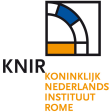Summary
- The project was an innovative landscape study for the Mediterranean archaeology. It started in a preliminary phase of modern scientific debate on field survey methodology. The research strategy was based on the integrated use of a wide range of information sources, as well as a variety of non-destructive technologies, like geology survey, and field-walking techniques. Following Braudel's concept of the “longue durée” the project aimed to understand the landscape evolution of the Biferno river valley, from prehistory to contemporary times, and to reconstruct the historical evolution of human-environment interaction.
Project Dates
- 1970 - 1990
Periods
- No period data has been added yet
- 125500 BC
- 100000 BC
- 1990 AD
- 2000 AD
- The main programme of field-walking survey was carried out between 1974 and 1978, for a total of fourteen weeks, normally employing twelve workers each day. The survey study area measured 75x30 kilometres (2250 square kilometres). Twenty-three squares, each of which measures about 90 square kilometres, were covered corresponding to the grid reported in IGM maps (scale 1:25000). The field-walking survey was systematic and intensive, and the geomorphology and geology had an important role in sampling strategy. The spatial sampling consists of extensively surveyed blocks of land in the lower valley, blocks and transects in the middle and upper valley. Three research intensity levels were established: intensive-level survey; intermediate-level survey; reconnaissance survey. The units investigated in the upper, middle, and lower zones consist of, respectively, 30 percent, 25 percent and 45 percent of the total sample area. In total, the Biferno Valley Survey recorded almost 1200 units (surface material scatters) in 400 square kilometres, roughly 3 units per square kilometre. The units with archaeological materials were numbered and assigned a unit record, so some of these were distinct concentrations of artefacts ('sites'), others were fields with low densities of sporadic or 'off-site' material. When a distinct artefact concentration was found, the team defined its limits, and then collected all visible artefacts within them. The team covered the unit in parallel lines walking fifteen footsteps apart, picking up the archaeological artefacts. All sites were classified in size categories: one was the large (over roughly 100x100 metres); small (under about 50x50 metres); and medium (between the two). Augering, geophysical survey and paleoenvironmental investigations were carried out in a selection of sites located during the field-walking survey to: 1) assess the potential presence of archaeological deposits below the plough-soil and thus guide future excavation; 2) map archaeological features in the vicinity of the sites where excavation was being conducted (the most important site for every major period, to answer specific questions about settlement and land use) (Barker 1995 pp.40-62).
Other Comments
- Director: G. Barker, University of Sheffield (UK) ................................................................................................................................ This record has been produced by the Fasti Online Survey team within the framework of the KNIR student internship 2020 'Digital Field Survey Archaeology'.
- The project aims to reconstruct the long-term landscape history of a Mediterranean region (Molise, Biferno Valley), with a particular focus on recognizing the landscape change triggered by human occupation and the influence played by the environment on ancient settlement strategies.
- American Philosophical Society, the British Academy, the British School at Rome, the Leverhulme Research Fund, the National Geographic Society, the National Museum of Brazil, Regione Molise (the Regional Government of Molise), the Social Science Research Council, the Superintendency of Antiquities for Molise, the University of Cambridge (Crowther-Benyon Fund), the University of Oxford (Craven Committee) and the University of Sheffield (Research Fund)
Director
-
Director
- G. Barker




![Edit [ed]](/survey/skins/fastisur/images/plusminus/edit.png)
![View [view]](/survey/skins/fastisur/images/plusminus/view.png)